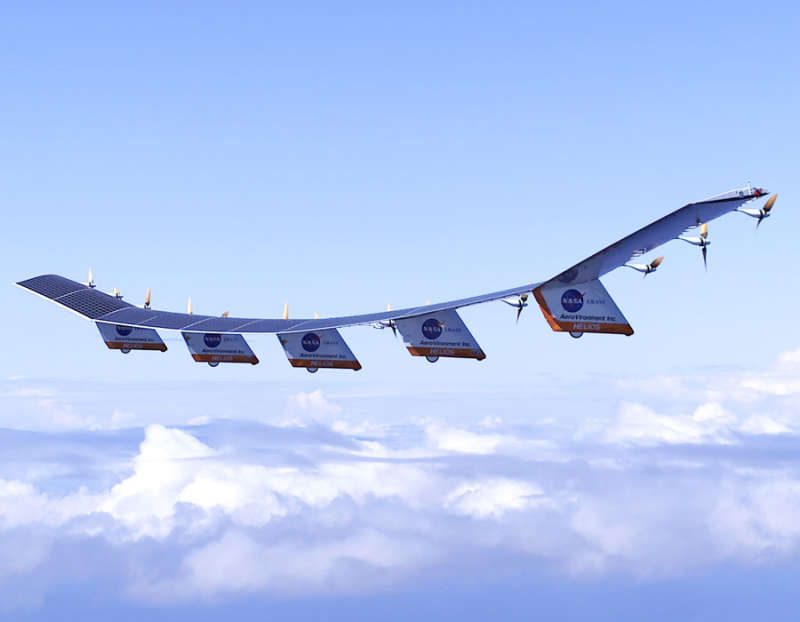A Flight of Helios

Credit & Copyright: Carla Thomas, courtesy
DFRC,
NASA
Explanation:
An example of solar-powered flight, NASA's Helios
aircraft flew almost
one hundred years after the Wright brothers'
historic flight on December 17, 1903.
Pictured here at 3,000 meters in
in skies northwest of
Kauai,
Hawaii, USA in August 2001,
the remotely piloted Helios is traveling at about 40 kilometers per hour.
Essentially an
ultralight flying wing with 14
electric motors, the aircraft was built by
AeroVironment Inc.
Covered with solar cells,
Helios'
impressive 247 foot wide wing
exceeded the wing span and even overall length of a
Boeing 747
jet airliner.
Climbing during daylight hours,
the prototype aircraft
ultimately
reached an altitude just short of 30,000 meters, breaking
records for non-rocket
powered flight.
Helios was intended as a
technology demonstrator, but
in the extremely thin air 30,000 meters above Earth's surface, the flight
of Helios also
approached
conditions for
winged
flight in the
atmosphere
of Mars.
Authors & editors:
Robert Nemiroff
(MTU) &
Jerry Bonnell
(USRA)
NASA Web Site Statements, Warnings,
and Disclaimers
NASA Official: Jay Norris.
Specific
rights apply.
A service of:
LHEA at
NASA /
GSFC
& Michigan Tech. U.

